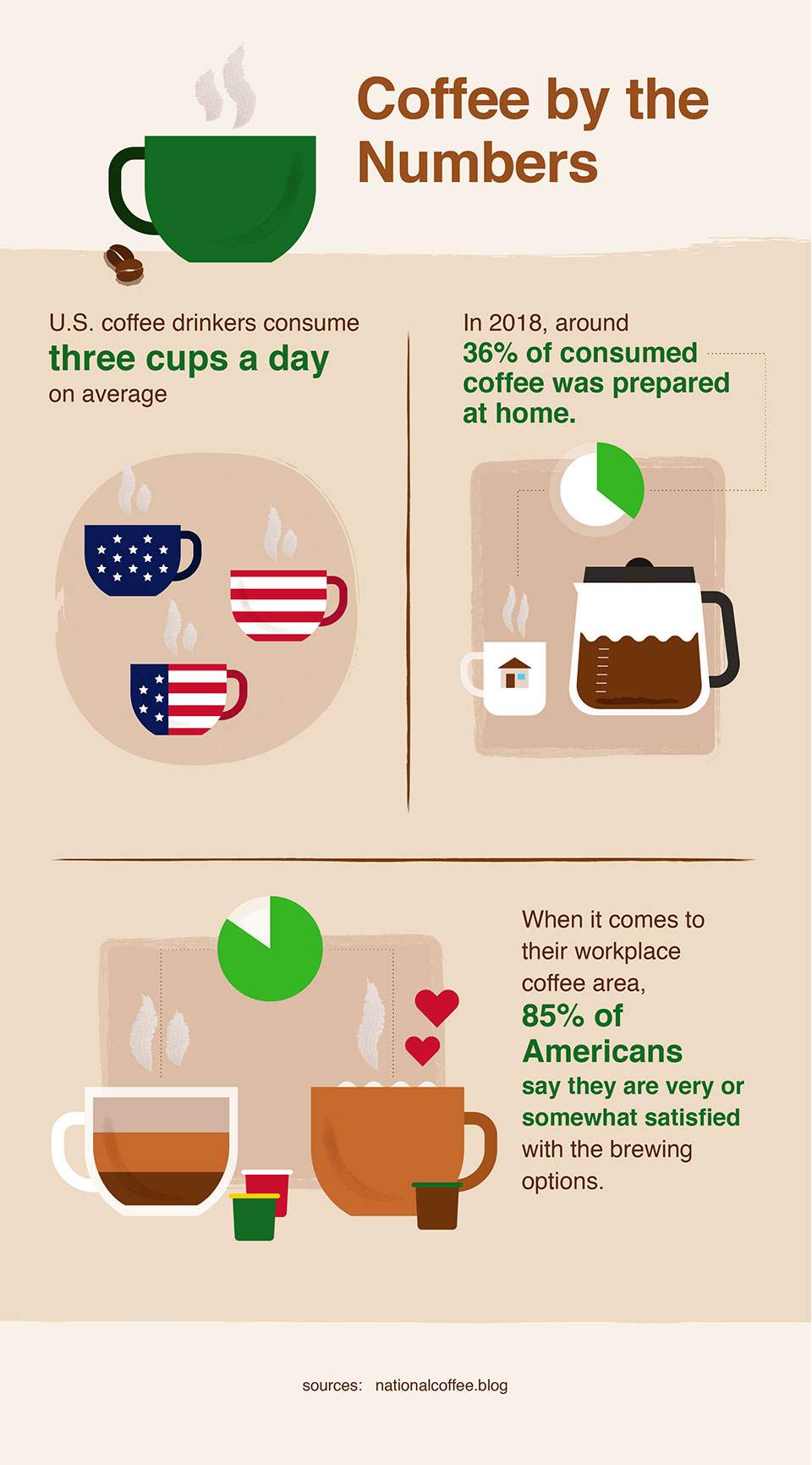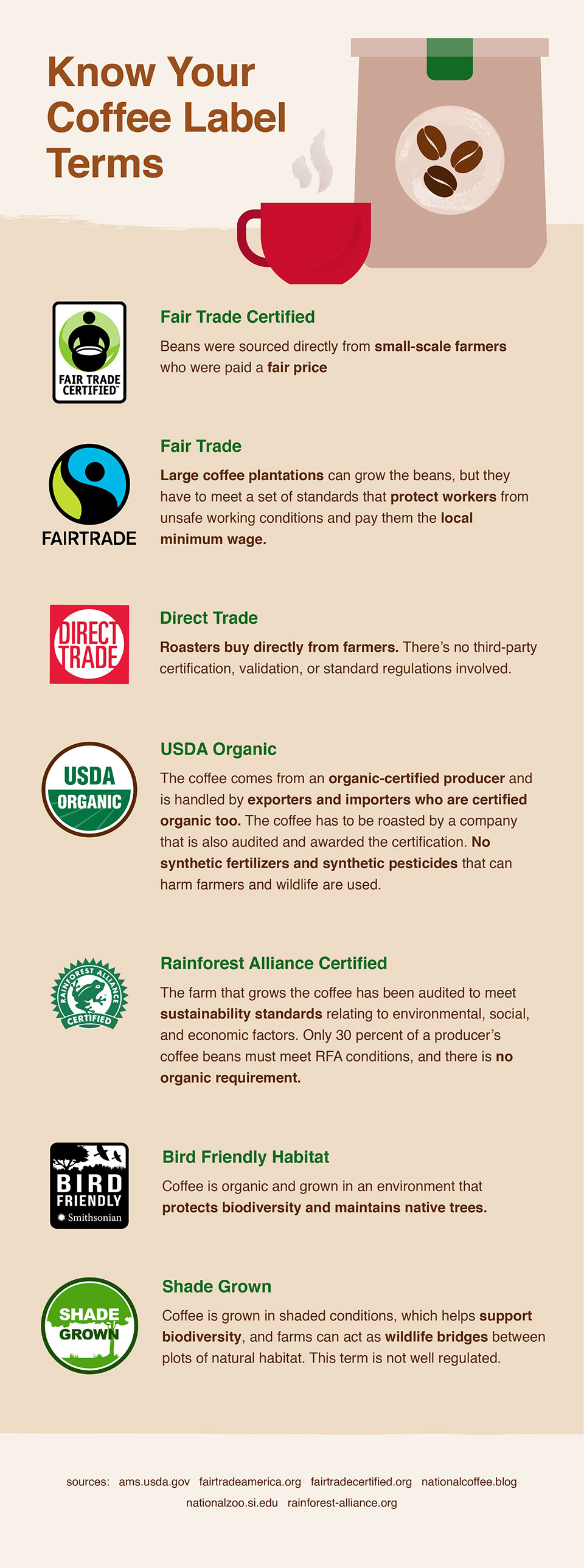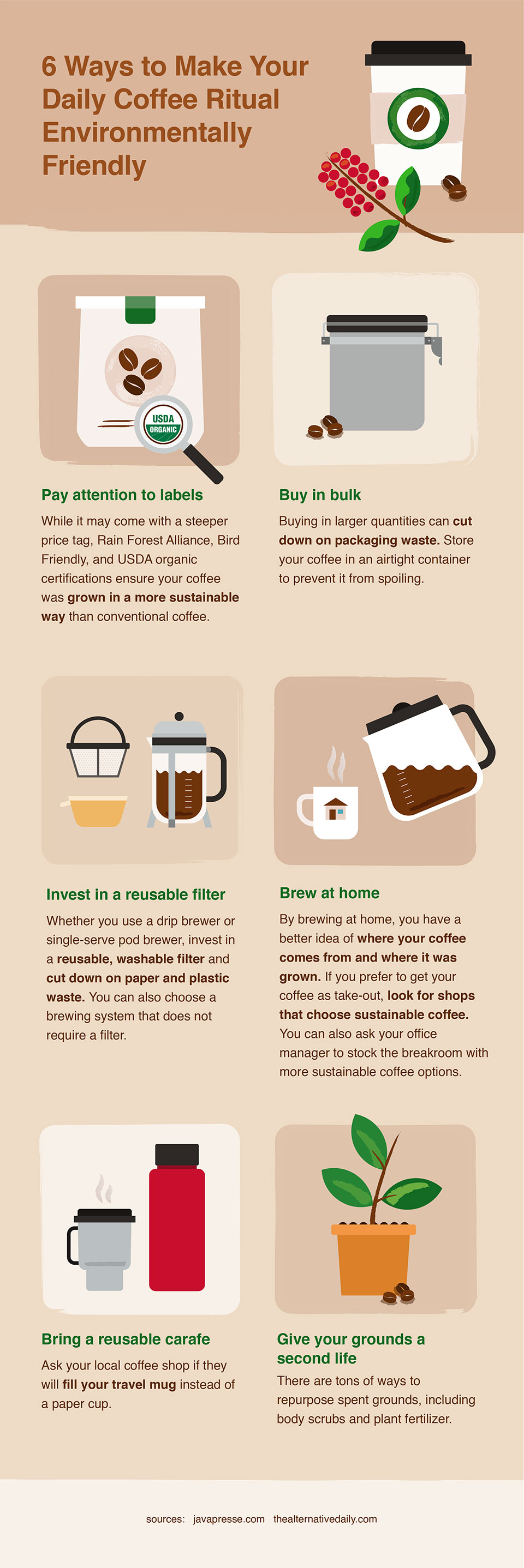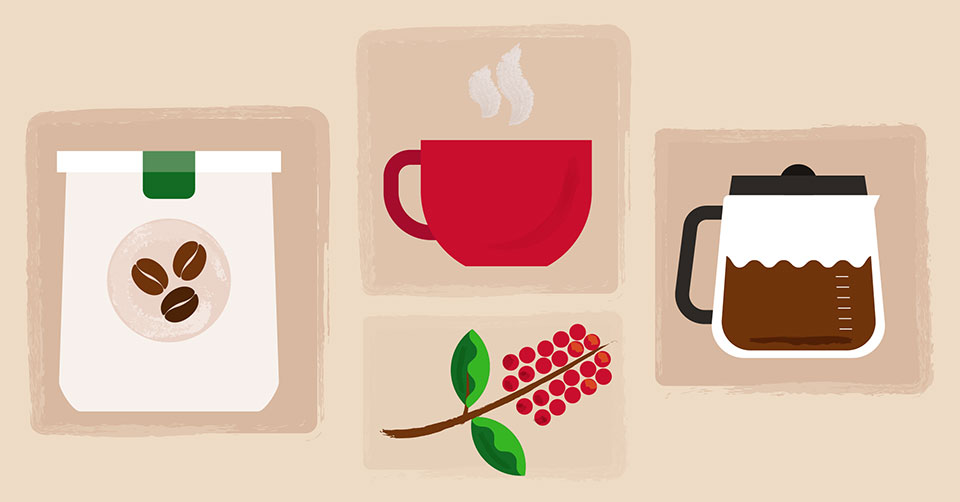Coffee is such a simple pleasure, and yet it seems to have evolved into a more complicated beverage over the past decade. It goes beyond ordering a complex cappuccino or espresso from Starbucks. There are so many different certifications for the coffee beans we brew that it can seem overwhelming.
What's the difference between fair trade and direct trade? Is your coffee organically grown, shade grown, or Rainforest Alliance certified? If the wide range of labels leave you questioning your coffee purchase, we're here to help. With a little bit of explanation, you can drink your next cup of joe knowing exactly what these certifications mean, from the taste of your coffee to the beans' impact on the environment.
The History of Coffee
It's believed that the discovery of coffee centers around a young goat herder named Kaldi in the Ethiopian province of Kaffa around the late 6th century. He noticed that his flock would exhibit a strange restlessness after they had eaten the berries and leaves of an unknown plant.
Monks from a nearby monastery heard about the caffeinated goats and discovered that by roasting and grinding the seeds of this plant, and then infusing the grounds in water, they were left with a unique beverage that kept them alert and awake during long hours of prayer. Word quickly spread and soon residents of the far away holy cities of Mecca and Medina sipped on the new-found magical beverage.
Fast forward a couple of centuries to 1699, and it was Dutch traders taking coffee to Java, Indonesia, which became the second commercially available coffee in the world. After seeing their success, others were quick to follow suit. And by 1850, every corner of the world was drinking coffee. In fact, behind oil, coffee is the second most traded commodity in the world.

What Goes Into Certification?
Certification has become somewhat of a buzzword in the coffee industry. These labels tell consumers about the farming practices used to produce a certain coffee, and they carry great weight and meaning for producers.
Producers conduct extensive research into what the certification policy dictates, make any necessary changes to ensure their practices match up with the requirements for certain certifications, fill out paperwork to register their product, and then go through a rigorous auditing and inspection.
They're incentivized to take these certification steps because of the opportunity to sell coffee at higher per-pound prices. And retail buyers appreciate certified coffees because of the associated transparency, the chance for higher retail pricing, and the opportunity to support sustainable agricultural practices.
But what do these certifications actually mean? Here are the basic principles behind the most common certifications so you can have a better handle on them when you pick up a bag of coffee at the store or in the breakroom.

Fair Trade/Fairtrade Certified
There's “Fairtrade” and “fair trade,” and yes, there is a difference. Fairtrade coffee means the beans were sourced directly from small-scale farmers who were paid a fair price
Fairtrade International dictates a minimum price that has to be paid directly to coffee producers, and that price has to cover the costs of sustainable production. The goal is to encourage coffee producers to invest in their communities or businesses.
Unlike Fairtrade, fair trade doesn't necessarily mean the coffee was purchased directly from small-scale farmers. Large coffee plantations can grow the beans, but they have to meet a set of standards that protect workers from unsafe working conditions and pay them the local minimum wage. The goal is to promote equality and growth for international trade.
For both certifications, a premium is attached to incentivize producers to do good and responsible work, which includes offering some price stability in an unstable economic time and to make smart decisions about pooling or acquiring resources. It also doesn't require organic certification.
Direct Trade
This term means coffee doesn't have any built-in third-party certification, validation, or standard regulations. It's more of a method or ideology in which roasters (distributors) buy directly from farmers (producers). The goal is to improve what is, by some, considered to be an increasingly convoluted fair trade system. Instead of a specific set of rules, direct traders go for a more open and mutually beneficial form of trade.
Farmers meet and interact with distributors directly, and the producers aim to provide quality products to their buyers in exchange for better prices for their goods. Because there are no regulations, direct trade really relies on the ethics and honesty of the distributors. But the hope is that both parties work honestly in an attempt to improve sustainability and the coffee trade as a whole.
USDA Organic
Coffee that is USDA organic is strictly regulated by the Department of Agriculture and requires that the beans come from an organic-certified producer and are handled by exporters and importers who carry certification themselves. In addition, they have to be roasted by a company that is also audited and awarded the mark.
If you see this seal, it means the producers banned synthetic fertilizers and synthetic pesticides that can harm farmers and wildlife, and that soil quality is protected.
While USDA organic coffee is often more expensive than conventional coffee, you can be assured that your purchase supports environmentally friendly practices and that the farmers and farm laborers do not breathe in clouds of chemicals, drink tainted waste water, erode the quality of their soil, or depend on manufactured and heavy pollutant inputs while on the job.
To earn the title of USDA organic, both producers and buyers have to pay annual fees and are required to undergo inspection and certification.
Rainforest Alliance Certified
As you might infer from the name, the Rainforest Alliance seal means a farm has been audited to meet sustainability standards relating to environmental, social, and economic factors. The goal is to improve the livelihoods, health, and well-being of the communities of coffee farmers.
The criteria that farmers must meet is designed to protect biodiversity, deliver financial benefits to farmers, and foster a culture of respect for workers and local communities. This certification also helps promote decent living and working conditions, gender equity, and educational access for children in farm communities.
In order for the seal to be used on packaging, only 30 percent of a producer's coffee beans must meet RFA conditions, and there is no organic requirement.

Bird Friendly Habitat
As the name indicates, coffee with a Bird Friendly Habitat certification means not only is it organic, but also that it was grown in an environment that protected biodiversity and maintained native trees. The goal is that the coffee farm can remain an important habitat for birds and other wildlife.
Developed by ecologists at the Smithsonian Migratory Bird Center, this seal requires a canopy at least 12 meters high with predominantly native tree species, a minimum of 40 percent shade cover even after pruning, at least two strata or layers of vegetation, and at least 10 woody species dispersed throughout the production area.
While there's no certification fee, producers must pay for initial and periodic audits, with all the fees going to support bird conservation research.
Shade Grown
When it comes to this label, the details are, well, a little bit shady. The label often appears on specialty coffees, but this designation isn't regulated and doesn't tell you much about the growing conditions at the farm.
Coffee grown in the shade is often thought to taste better because the long ripening times contribute to complex flavors, and shade growing benefits ecology.
Shade-grown coffee helps support biodiversity, and farms can act as wildlife bridges between plots of natural habitat. Numerous studies show more diversity of birds, orchids, bats, ants, amphibians, bees, other insects, mammals, and others in shade-grown coffee than in sun-grown coffee.
Due to the presence of tree cover, shade-grown coffee also contributes to soil conservation, pest control and pollination, a reduction of carbon in the atmosphere, and protection of water supplies in both quantity and quality.
The Bottom Line
It's clear there's more than just a hill of beans when it comes to coffee and certifications. A lot goes into each seal, and as a result, into each cup of coffee. But just like that cup of coffee, there's no perfect certification that's one-size-fits-all.
It all comes down to what's important to you as a consumer. For some people, environmental protections take center stage, while others want to know that no pesticides ever touched their java. Others just want that latte.
At the end of the day, it's all about preference and how you want to spend your money—bottom's up!
Share this infographic on your site
Abby Heugel
Abby has more than 15 years professional experience and her personal work has been featured multiple times in Reader's Digest, Huffington Post, The Today Show, Vend, Shopify, and BuzzFeed, among other places. She was the editor of two specialty retail trade publications before moving on to become the associate editor of a website that was ranked as one of the top 10 mobile websites in the world. She also has an award-winning blog and more than 60,000 social media followers.

